
1973, Proposta per la lavorazione a mano della porcellana, ciotole e vasi della Serie Samos, Danese Milano foto Fabrizio Marchesi © Triennale Milano – Archivi
The question of whether or not to set up a design museum in Italy, or rather in Milan, was the subject of a fierce cultural debate that went on for more than fifty years. Intellectuals, architects, designers and entrepreneurs bickered endlessly about the “if” and “where” and, above all, the “how” to celebrate and present such a chaotic discipline of such uncertain scope.
Enzo Mari did his part when, in 2009, he launched a collective curatorial project from the pages of Abitare magazine, in the form of a game entitled “For a new Museo del Design”. In the first issue, Mari set out the cornerstones of the culture of design, and stressed the need to take into account the difference between “the art of design” and the “decorative arts”. He invited nine personalities, including Michele De Lucchi, Joseph Rykwert, Vittorio Gregotti, Jasper Morrison, Konstantin Grcic, Cini Boeri, Alessandro Mendini, Manolo De Giorgi, and Giampiero Bosoni to choose five objects that could be objectively considered worthy of a place in a museum. In addition to the five proposals, each curator was asked to accept or reject each of the works that had been chosen by those that had come before. The fifty objects would then constitute the permanent collection of a hypothetical design museum: objects of the highest aesthetic and formal quality, with no decorative uncertainty and thus free from the inevitable decline that this would entail.
One of the fundamental features of Mari’s Museo del Design game was that, in order to be admitted to the museum, each object was to be filtered by time and thus far enough from its creation. Mari set this minimum time limit at 45 years. With a variant regarding the author of the article, we can follow the rules of this game – 5 objects designed by Enzo Mari by 1975 – and go on a very brief tour through the more than 1,600 objects of Italian design now in the Permanent Collection of Triennale Milano.
1957, 16 animali, Danese Milano
A thick wooden panel is cut by a single line that breaks it up into 16 elements, each of which bears the distinctive features of an animal. Each element has at least four lives: as part of a whole, like in a jigsaw puzzle, as an element to be matched with the other parts, as an individual entity, and as the protagonist of all the uses and narratives that might arise in the end user’s imagination.
Even though extremely neat in terms of its form, this is a highly complex system that lets a child freely exercise their natural propensity for discovery and for finding out about the world around them. It is an object that lends itself to a whole variety of interpretations, for its use is only suggested by its shape, though this does not influence its use.

1957, 16 animali, Danese Milano foto scatola Amendolagine Barracchia © Triennale Milano – Archivi
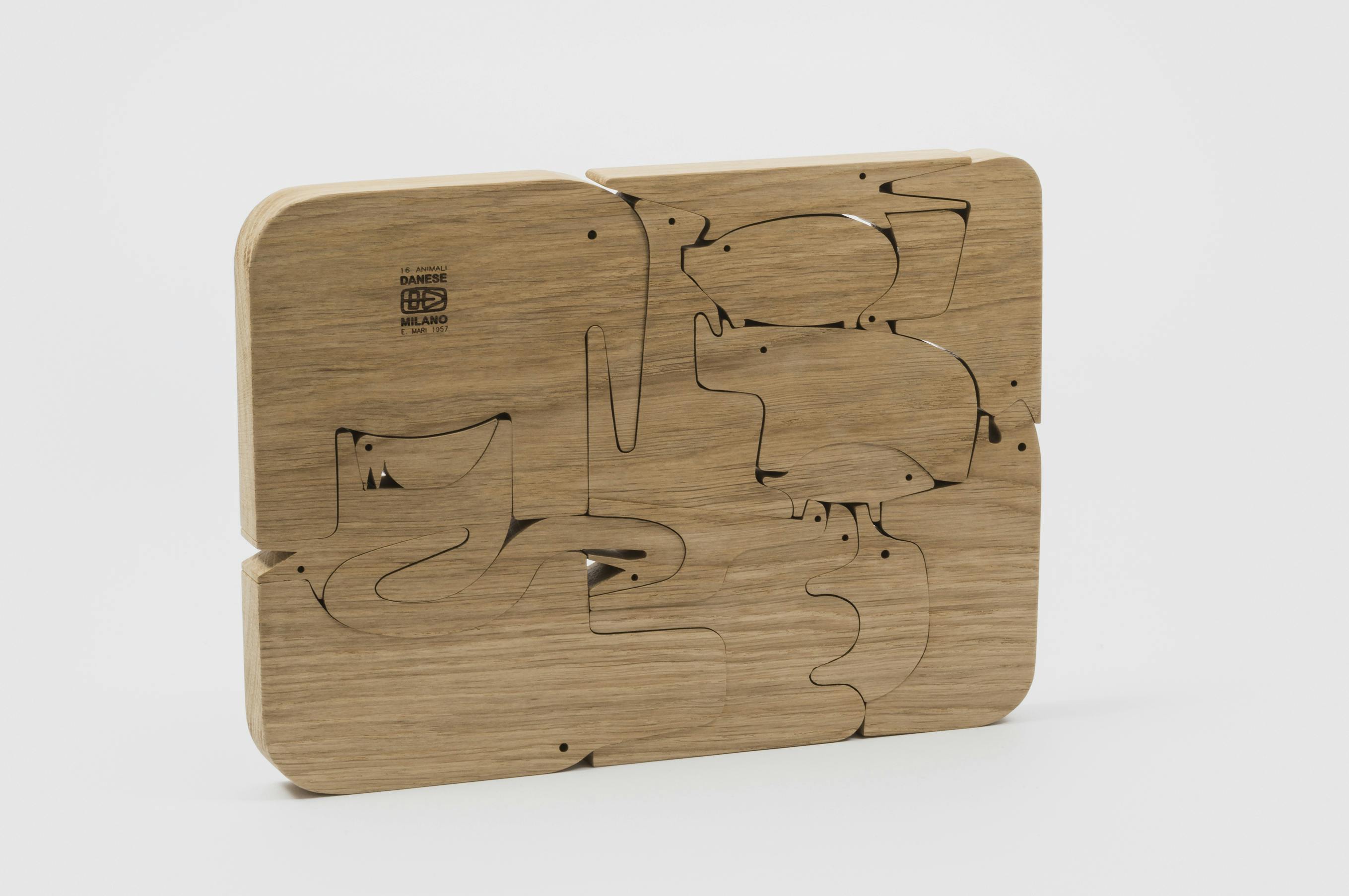
1957, 16 animali, Danese Milano foto scatola Amendolagine Barracchia © Triennale Milano – Archivi
1966, Glifo, Enzo Mari with Elio Mari, Gavina
Montecatini commissioned Enzo Mari to come up with a project to explore the potential offered by injection-moulded ABS. The project selected was for a bookcase, which was then produced by Dino Gavina. The base element is a cubic module consisting of square walls measuring 35 cm per side. The design revolves around the form of the joint – which was covered by an industrial patent – that forms part of each wall, so that the bookcase can be rearranged into an almost infinite number of shapes.
At the time when Ikea was beginning to produce the furniture it sold and was entering the international market, Mari put his mind to a design that would be cheap to produce, easily transportable and robust, and that could be assembled by anyone without the use of tools. The bookcase was well received by critics but achieved only mediocre commercial success. The public, who were not used to taking part in completing a piece of furniture, mistook lightness for fragility.
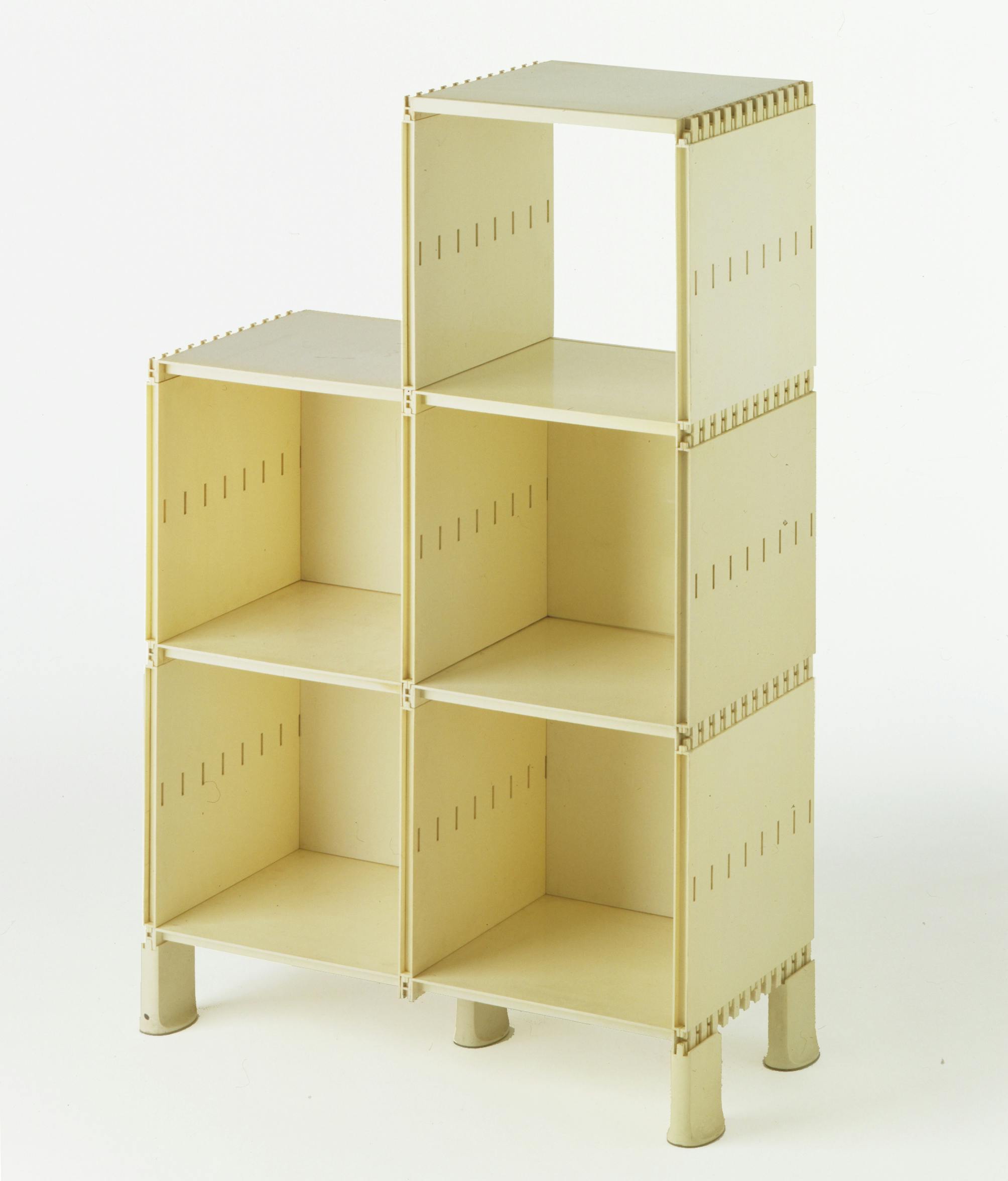
1966, Glifo, Enzo Mari con Elio Mari, Gavina foto Amendolagine Barracchia © Triennale Milano – Archivi
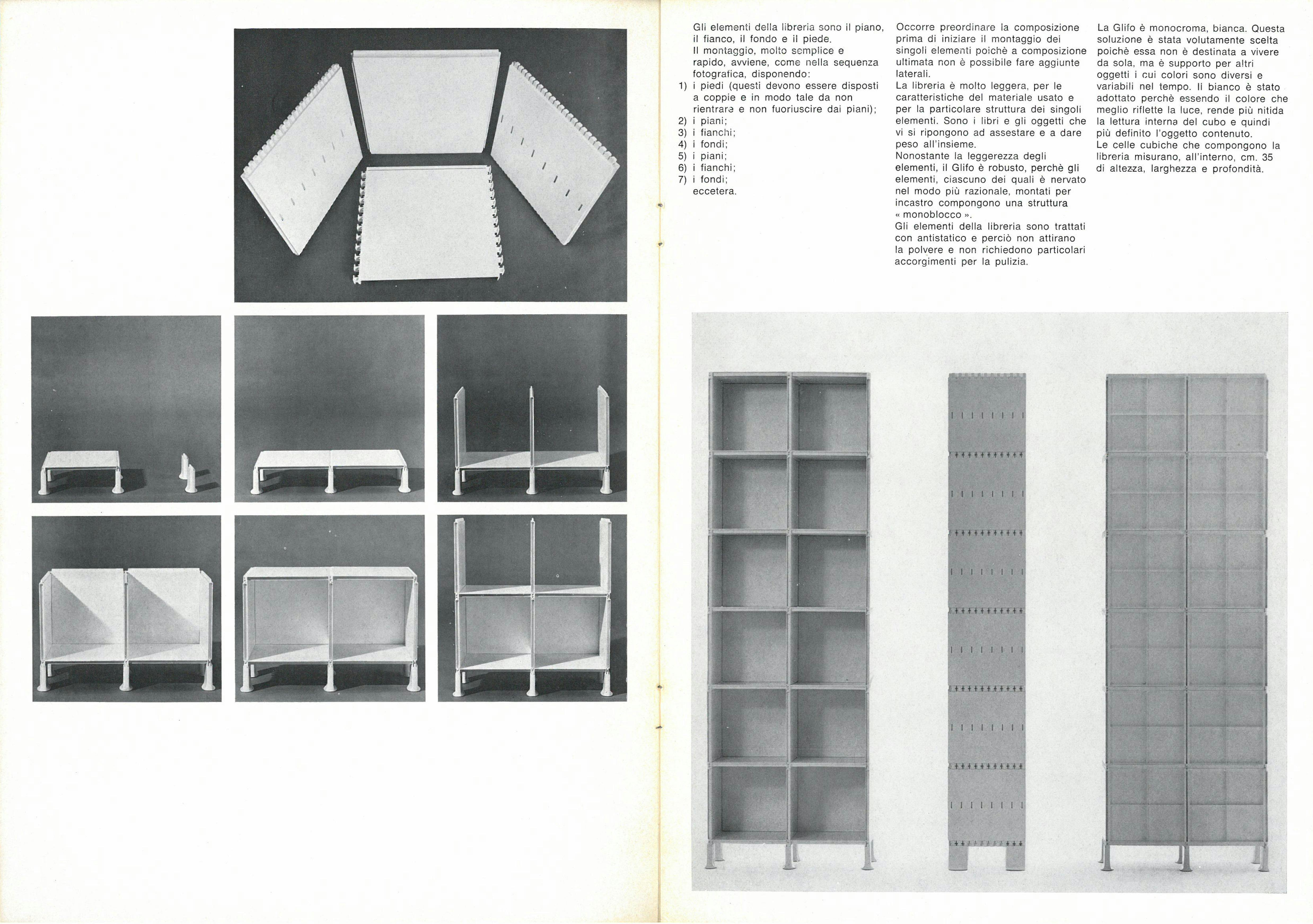
Catalogo aziendale Gavina. Archivio del Design Italiano - Triennale Milano

Catalogo aziendale Gavina. Archivio del Design Italiano - Triennale Milano
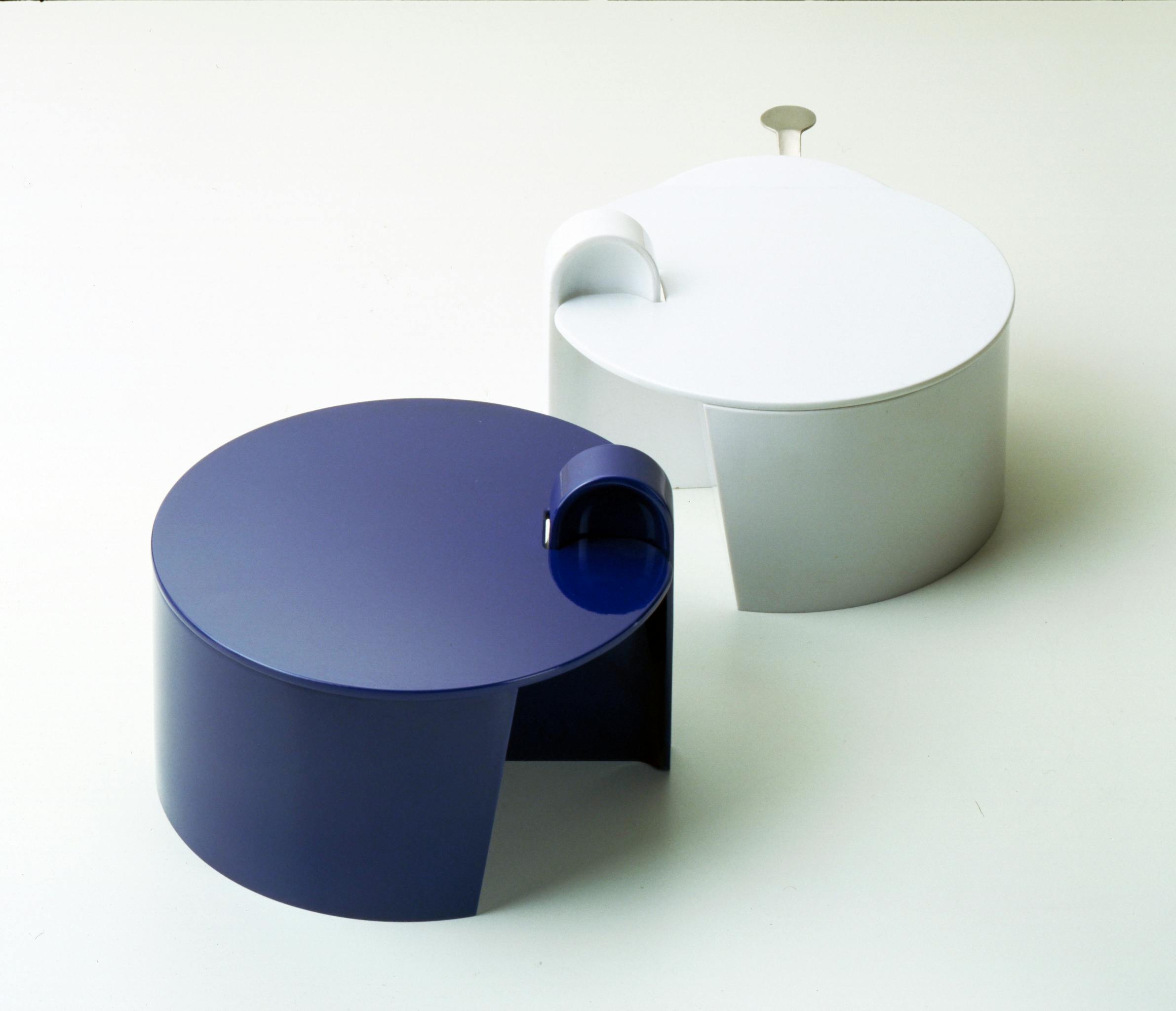
1968, Java, Danese Milano (revived by Alessi in 1997)
In designing this container for the table, Mari concentrated on what it would take to manufacture it, and especially on the hinge, which was the part that would require the greatest effort in terms of organising and carrying out the work in the factory.
According to the dictionaries, a hinge is a device that makes it possible to connect two rigid structures while leaving them free to rotate around an axis. According to Enzo Mari, a hinge is the obsessive repetition of the same action by a worker, who is required to assemble three elements.
Convinced that the quality of his design would be able to free the worker from such alienating work, Mari created a hinge consisting of two elements – the container and the lid – which would themselves form a hinge when fitted together. The Java cheese bowl was thus a political project and yet it is was also granted an industrial patent.
“If people made an object – a flower pot, a chair, or a shoe – with their own hands, they would probably be more mindful, and their aesthetic tastes would improve”
1971, Day Night, Enzo Mari with Elio Mari, Driade
Enzo Mari repeatedly said that he considered this sofa-bed to be a perfect object. Perfect when used as a sofa, comfortable as a bed, and easy to transform from one to the other simply by rotating the backrest. It was sturdy, economical to produce, restrained, and with an original look far removed from the formalisms that were all the rage for this type of object at the time. Despite everything, Mari struggled to find a producer and then, once he had convinced Driade to make ten thousand of them, he was faced with very poor sales figures. It was this commercial failure that made Mari begin the think about how he could help people recognise real quality. This was his answer: “If people made an object – a flower pot, a chair, or a shoe – with their own hands, they would probably be more mindful, and their aesthetic tastes would improve”, and in 1973 this led to his Proposta per un’autoprogettazione (something like “proposal for design-it-yourself”).
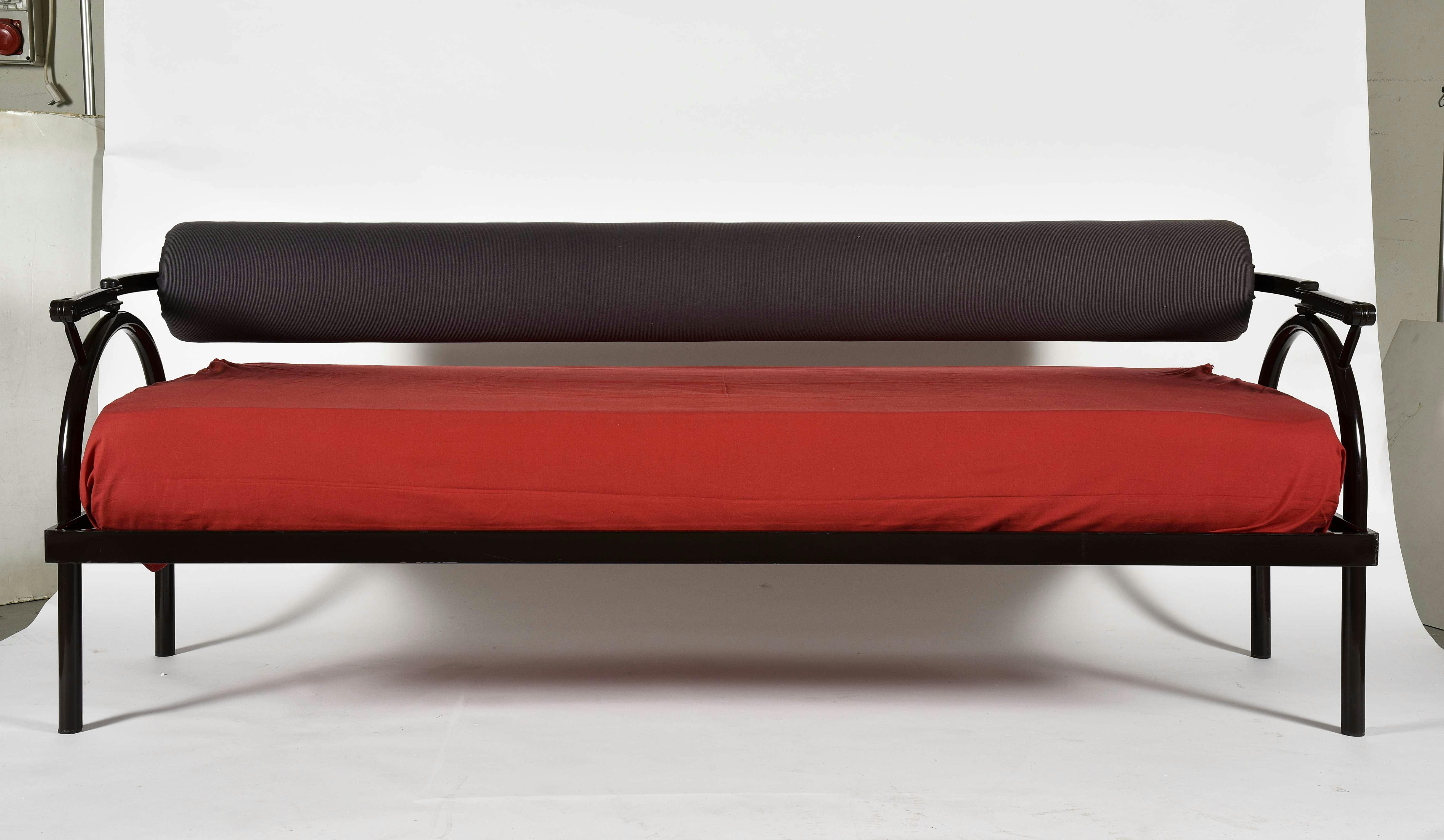
1971, Day Night, Enzo Mari con Elio Mari, Driade Foto Federico Manusardi © Triennale Milano – Archivi
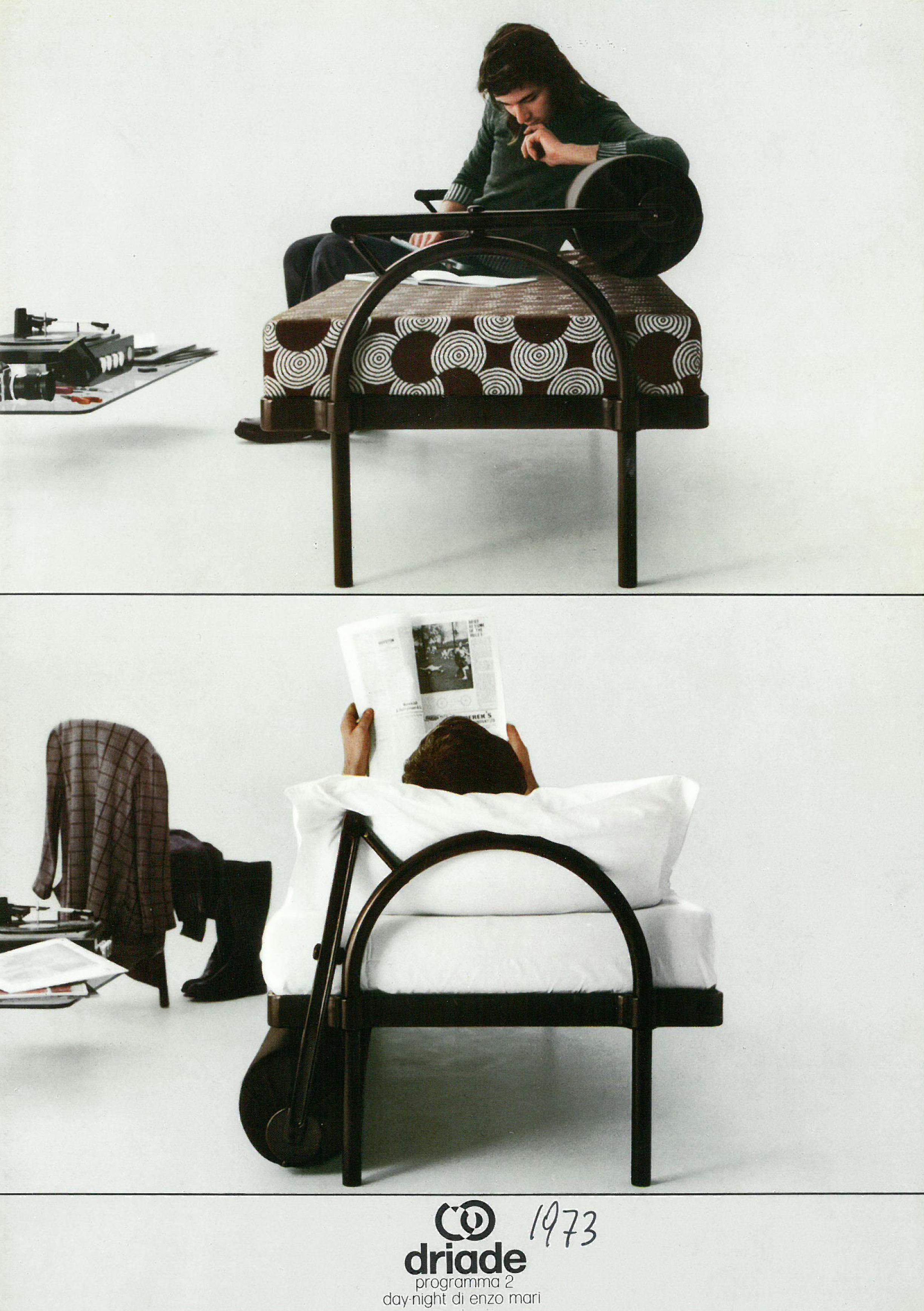
1973, Pagine dal catalogo aziendale Driade. Archivio del Design Italiano - Triennale Milano

1973, Pagine dal catalogo aziendale Driade. Archivio del Design Italiano - Triennale Milano
1973, Proposta per la lavorazione a mano della porcellana, ciotole e vasi della Serie Samos, Danese Milano
Assembly lines and mass production were first set up in artisan’s workshops, long before the Industrial Revolution. Industry simply mechanised the actions needed to do a job, in a process of expropriation that increased the distance between the finished object and the person who made it. One of Enzo Mari’s many ideas to bridge this gap came in the form of his “proposal for working porcelain by hand to create bowls and vases in the Samos Collection”.
In order to involve the artisan in the creation of the object, thus regaining possession of the outcome of his work, the designer establishes a series of modules (cords, strips, squares, discs, and suchlike) and asks the artisan to combine them in ever-different ways so as to obtain an original finished object, be it a bowl or a vase. Mari created a series of examples, but simply as models, with no intention of them being the end product. The idea of regaining possession of the results of one’s work was not successful, or maybe it was misunderstood, but we are nevertheless left with timeless porcelain objects that are at once poetic, poignant and therapeutic.

1973, Proposta per la lavorazione a mano della porcellana, ciotole e vasi della Serie Samos, Danese Milano foto Fabrizio Marchesi © Triennale Milano – Archivi
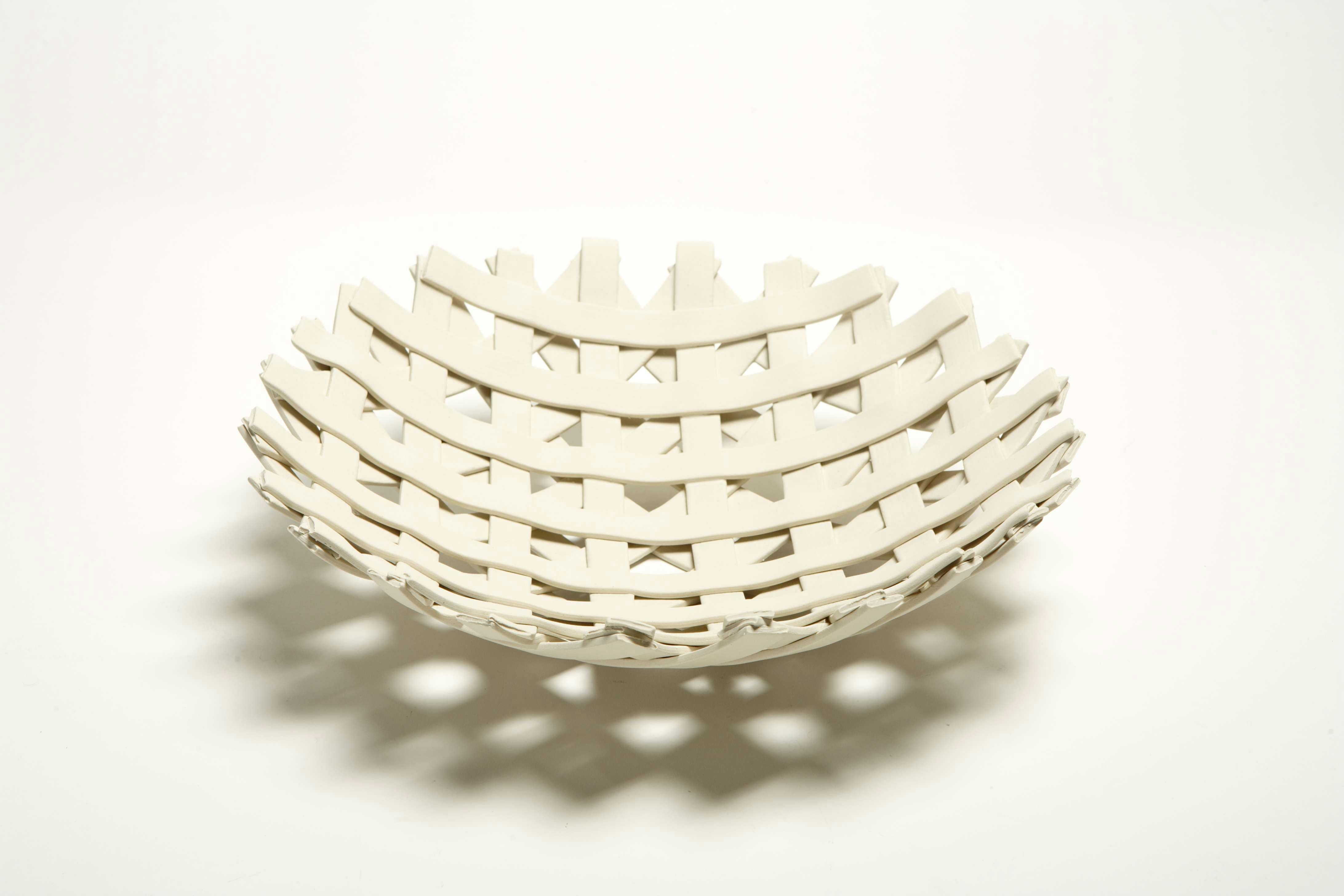
1973, Proposta per la lavorazione a mano della porcellana, ciotole e vasi della Serie Samos, Danese Milano foto Fabrizio Marchesi © Triennale Milano – Archivi

1973, Proposta per la lavorazione a mano della porcellana, ciotole e vasi della Serie Samos, Danese Milano foto Fabrizio Marchesi © Triennale Milano – Archivi